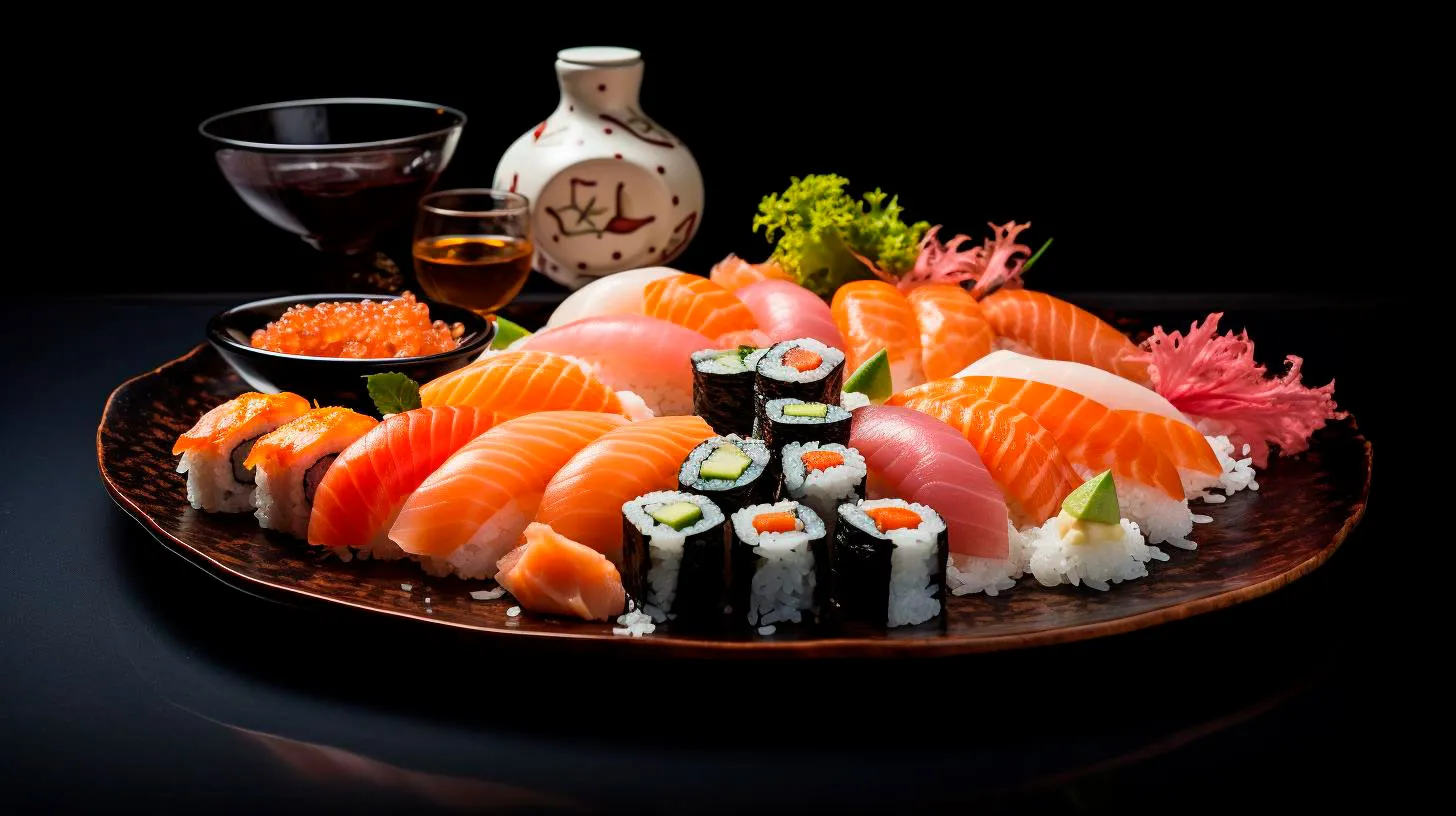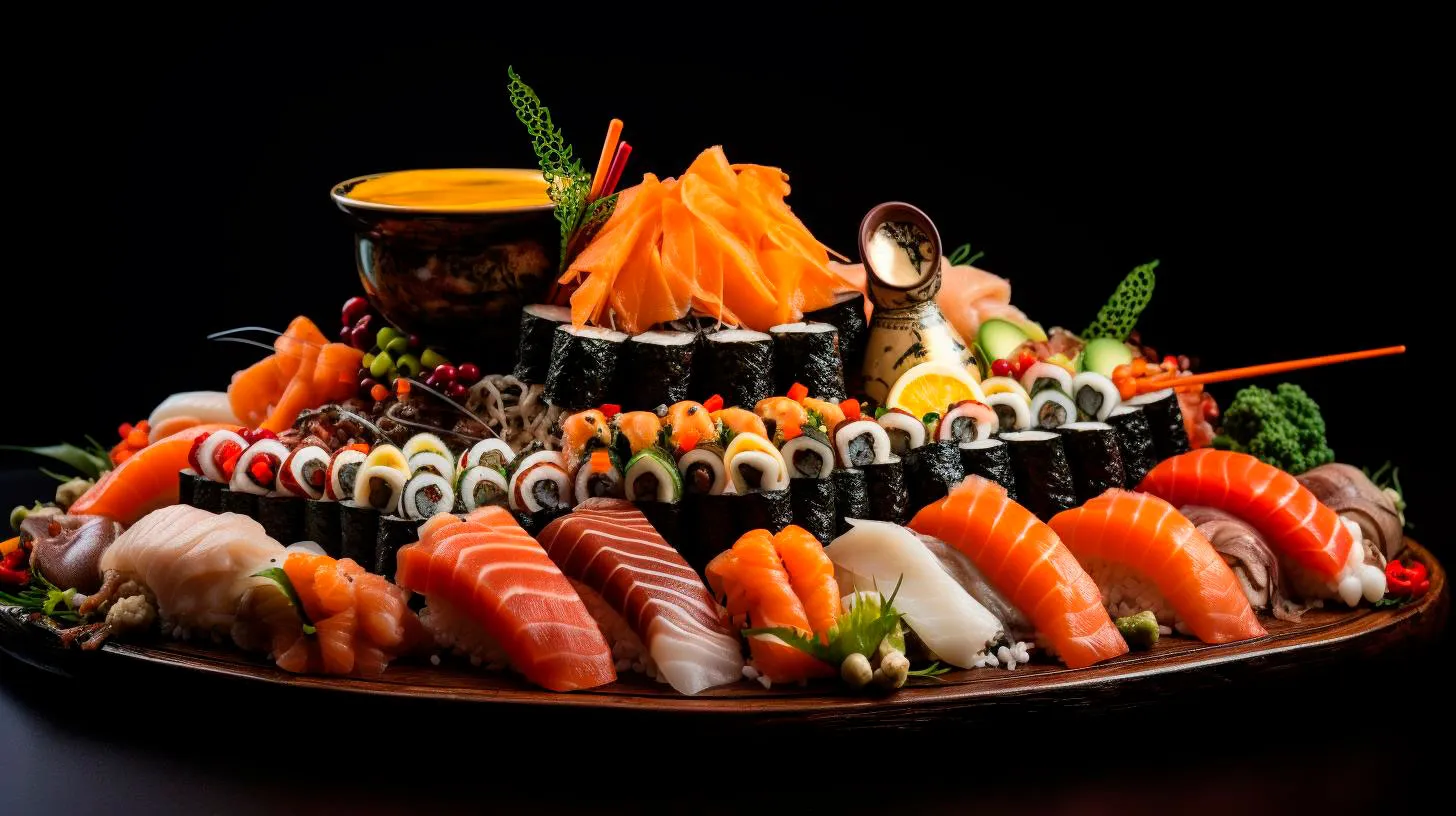The Cultural Significance of Tea: Unveiling the Traditions and Customs
In this article, we will explore the rich history, traditions, and customs associated with tea, shedding light on the fascinating cultural aspects surrounding this beloved beverage.
The Origins: Tea’s Ancient Beginnings
Tea originated in ancient China, over 5,000 years ago, and gradually spread to neighboring countries before capturing the attention of the world. According to legend, the discovery of tea occurred in 2737 BCE when Emperor Shen Nong was boiling water under a tea tree, and a few leaves accidentally fell into his pot. The resulting infusion became the first cup of tea, forever altering the course of history. This ancient tale symbolizes the start of tea’s cultural significance.
Key takeaway: Tea has a deep-rooted history that dates back to ancient times, originating in China over five millennia ago.
China: The Birthplace of Tea Culture
In China, tea not only serves as a beverage but also holds a profound cultural significance. It is an integral part of various ceremonies and rituals, including the traditional Chinese tea ceremony. This ceremonial practice involves carefully preparing and presenting tea leaves, showcasing the artistry and mindfulness behind each cup. Chinese tea culture emphasizes harmony, respect, and tranquility, with tea serving as a symbol of hospitality and friendship.
Key takeaways:
- The traditional Chinese tea ceremony represents a harmonious and respectful practice.
- Tea serves as a symbol of hospitality and friendship in Chinese culture.
Japan: The Way of Tea
Japanese tea culture is deeply rooted in spirituality and mindfulness, best exemplified by the renowned Japanese tea ceremony, also known as chanoyu or the Way of Tea. Originating in the 16th century, this ceremonial practice emphasizes grace, simplicity, and harmony with nature. The preparation and presentation of matcha (powdered green tea) play a central role, reflecting the Japanese philosophy of finding beauty in simplicity.
Key takeaways:
- The Japanese tea ceremony embraces simplicity, grace, and harmony with nature.
- Matcha, a powdered green tea, is a vital component of the Japanese tea ceremony.
India: Chai, the Heart of Social Bonding
In India, tea holds immense cultural significance and plays a pivotal role in social gatherings and daily routines. The brewing and sharing of chai (Indian tea) are considered acts of hospitality and friendliness. Chai wallahs, street vendors selling masala chai, are a common sight in crowded Indian markets, offering a warm cup of tea to passersby. The Indian tea culture symbolizes the nation’s love for spicy flavors and vibrant social connections.
Key takeaways:
- Chai serves as a catalyst for social bonding and hospitality in Indian culture.
- Chai wallahs are street vendors who epitomize the spirit of Indian tea culture.
Britain: Tea Time Traditions
No discussion about tea would be complete without mentioning the indelible mark British tea culture has left on the world. Introduced to Britain in the 17th century, tea quickly became a national obsession. The quintessentially British tradition of afternoon tea, with its assortment of finger sandwiches, scones, and pastries, remains an iconic cultural institution. Tea time in Britain is not only a cherished daily ritual but also an opportunity for socializing and indulging in delectable treats.
Key takeaways:
- The British tradition of afternoon tea has become a cultural institution.
- Tea time in Britain is a time for socializing and enjoying delightful treats.
The Global Impact: Tea’s Journey Beyond Borders
Tea’s cultural significance extends far beyond its country of origin, with different nations embracing and adapting tea traditions to fit their own cultures. The fusion of customs and rituals from around the world has resulted in a tapestry of tea cultures, where unique practices and flavors abound. From the Moroccan mint tea to the Russian samovar ceremonies, the global impact of tea showcases the incredible adaptability and universality of this beloved beverage.
Key takeaway: Tea’s global impact has led to the creation of diverse and unique tea cultures worldwide.
Conclusion
Tea’s cultural significance cannot be overstated. Through millennia, it has woven a thread that binds societies together, fostering friendship, hospitality, and mindfulness. Whether sipped in China, Japan, India, Britain, or any other part of the world, tea transcends boundaries and unites people in a shared love for this treasured drink. So next time you indulge in a cup of tea, remember the rich cultural heritage that accompanies it, and savor every sip with newfound appreciation.
Exploring the Rich History of Tea Trade: Discovering the Origins and Influences
In this blog article, we will delve into the fascinating history of tea trade, exploring its origins, influences, and key milestones throughout time.
The Origins of Tea Trade
Tea’s journey begins in ancient China, where it was first discovered and consumed for its medicinal properties. According to legend, the Chinese Emperor Shen Nung stumbled upon tea around 2737 BCE when tea leaves accidentally fell into his boiling water. Intrigued by the resulting infusion, he tasted it and was pleasantly surprised by its refreshing taste and rejuvenating effects.
As the consumption of tea gained popularity within the Chinese court, tea trade began to flourish. By the Tang Dynasty (618-907 CE), tea had become an integral part of Chinese culture and was soon embraced by neighboring Asian countries, such as Japan and Korea.
Influences on Tea Trade
The popularity of tea began to spread beyond Asia in the 16th century when European traders and explorers embarked on voyages to distant lands. Portuguese merchants, in particular, played a significant role in introducing tea to the West. In 1560, they established a trading post in Macao, a crucial hub for tea trade in China. It wasn’t long before tea found its way onto European shores, captivating noble households and becoming a symbol of wealth and status.
The British East India Company played a pivotal role in popularizing tea in Britain during the 17th and 18th centuries. As tea’s demand increased dramatically, the East India Company set up tea plantations in India to reduce dependence on Chinese tea imports. This move not only revolutionized the tea trade but also led to the establishment of the British Raj in India.
Key Milestones in Tea Trade
Throughout history, several key events and milestones have shaped the tea trade. Here are some notable highlights:
1. The Boston Tea Party (1773)
- Colonists protesting against British taxation threw a shipment of tea into Boston Harbor, an act that ignited the American Revolution.
- Resulted in the increased popularity of coffee in the United States, significantly impacting tea consumption in the country for years to come.
2. The Opium Wars (1839-1860)
- The British East India Company smuggled opium from India into China, leading to tensions and ultimately resulting in two wars.
- As part of the peace settlement, China was forced to open its markets to foreign trade, paving the way for the expansion of tea exports to the West.
3. The Indian Tea Industry Boom (late 19th century)
- The establishment of tea plantations in regions such as Assam and Darjeeling led to a significant increase in tea production, cementing India’s place as one of the world’s leading tea producers.
- India’s tea industry continues to thrive, exporting high-quality teas to various destinations worldwide.
Today, tea trade remains a vibrant global industry, with numerous countries contributing to its production, consumption, and cultural significance. From traditional tea ceremonies in Japan to the bustling tea markets in India and the afternoon tea rituals in Britain, tea continues to enthrall and connect people from different cultures.
Key Takeaways
As we explore the rich history of tea trade, we can draw several key takeaways:
- Tea has a storied past, originating in ancient China and spreading across continents.
- The tea trade has influenced cultural exchange and economic development throughout history.
- Notable milestones, such as the Boston Tea Party, Opium Wars, and the Indian tea industry boom, have shaped the tea trade’s trajectory.
- Tea remains a popular and beloved beverage worldwide, celebrated for its flavors, health benefits, and cultural significance.
So, the next time you sip a cup of tea, take a moment to appreciate the rich and vibrant history that lies within every sip. From ancient emperors to modern tea enthusiasts, we are all connected through the intricate tapestry of the tea trade.
Ancient Tea Routes: Unraveling the Ancient Traditions and Exchanges
The Silk Road: A Legendary Trade Route
The ancient tea routes were closely tied with the Silk Road, an extensive network of trade routes that connected the East to the West. With tea being one of China’s most sought-after commodities, it naturally became an essential part of the Silk Road trade. Traders and merchants would transport tea from China to various regions, crossing vast deserts and mountains, all in pursuit of tea’s exotic flavors.
Key Takeaway: The tea trade played a vital role in fostering cultural exchanges and economic growth along the Silk Road, paving the way for the globalization we witness today.
The Tea Horse Road: A Himalayan Journey
While the Silk Road spanned across vast territories, it was the Tea Horse Road that had a lasting impact on tea trade in Southeast Asia. This ancient route navigated treacherous terrains, winding through the Himalayas and linking China’s Yunnan province with Tibet, eventually reaching as far as Southeast Asia. Along this route, tea from China was exchanged for horses from Tibet, forging not only trade connections but also cultural ties between the regions.
Advantages:
- Built strong trade relationships between China, Tibet, and Southeast Asia.
- Allowed the exchange of not only goods but also ideas and traditions.
- Contributed to the development of the tea cultures in different regions.
The Russian Caravan: A Transcontinental Journey
Russia’s love affair with tea stemmed from the historic Russian Caravan route, which linked China and Russia in an intricate trade network. Caravans would travel for months, covering thousands of miles, to bring tea from China to the Urals and beyond. This enduring trade gave rise to the Russian tea culture and the beloved strong, smoky brew known as Russian Caravan tea.
Key Takeaway: The Russian Caravan route not only fueled the Russian tea tradition but also had a significant impact on tea consumption patterns in Europe.
The Modern Revival: Rediscovering the Ancient Tea Routes
While the ancient tea routes of yore have altered due to modern transportation and trade practices, a revival of these routes is underway. With their historical significance and cultural value, the ancient tea routes have become popular destinations for tea enthusiasts, history buffs, and adventurous travelers.
Features:
- Exploring the stunning landscapes and historical sites along the ancient tea routes.
- Visiting traditional tea houses and experiencing tea ceremonies deeply rooted in ancient traditions.
- Gaining a firsthand understanding of the global impact of tea trade throughout history.
The Global Impact: Tea’s Enduring Legacy
Tea has come a long way since its humble origins in China. Today, it is one of the most widely consumed beverages worldwide, with an estimated 2.6 million metric tons produced every year. The ancient tea routes and their influence on tea culture have left an indelible mark on the world.
Industry Statistics:
- The global tea market is projected to reach a value of $81.6 billion by 2026.
- China has remained the largest tea-producing country, with over 2.7 million metric tons in 2020.
- India ranks second in tea production, accounting for approximately 21% of the global market share.
The Enduring Fascination of Ancient Tea Routes
The allure of the ancient tea routes lies not only in their historical significance but also in the story they tell about human connections and the interweaving of cultures. These routes have shaped the world of tea as we know it today, leaving an everlasting impact on both trade and cultural heritage.
So, the next time you savor a cup of tea, take a moment to appreciate the journey it has undertaken to reach you and the traditions it carries within. Let us honor the ancient tea routes and the tea lovers across time who have cherished this beloved beverage.
Reviving the Tea Trade: Rediscovering Lost Routes and Timeless Practices
The Historical Significance of Tea
Tea has played a vital role in the human history of many cultures. Originating in ancient China, it quickly spread to neighboring countries and beyond. As early as the 9th century, tea had established itself as a popular beverage in Japan, becoming an integral part of the famous Japanese tea ceremony. In the 17th century, the British developed an insatiable taste for tea, leading to the establishment of trade routes and the founding of iconic tea companies like Twinings and Tetley.
However, over time, the tea trade faced various challenges. Changing tastes, political turmoil, and the rise of alternative beverages, such as coffee, caused a decline in tea consumption. Yet, as with any timeless tradition, the allure of tea couldn’t be extinguished entirely.
Reviving Lost Routes
One of the most intriguing aspects of the tea revival is the rediscovery of lost trade routes. Tea enthusiasts and explorers alike have embarked on quests to revive the ancient paths that once connected tea-growing regions with eager consumers.
In recent years, there has been a renewed interest in the Silk Road, an ancient network of trade routes stretching from China to the Mediterranean. Along these routes, tea, along with other valuable goods, was transported, contributing to the spread and popularity of this aromatic beverage.
Today, intrepid tea connoisseurs are retracing these routes, seeking out small tea farms and cooperative organizations at every stop. By directly engaging with tea farmers and building sustainable relationships, these modern-day traders are not only reviving lost routes but also supporting local communities and preserving traditional production techniques.
Preserving Timeless Practices
As tea regains its popularity, it is essential to acknowledge the significance of preserving timeless practices. From the traditional cultivation methods to the art of tea preparation, centuries-old techniques hold the key to preserving the authentic flavors and cultural heritage associated with tea.
Through collaborations with local tea farmers and investments in sustainable farming practices, tea companies and enthusiasts are ensuring the preservation of these traditional methods. By doing so, they are not only safeguarding the quality and integrity of tea but also providing economic opportunities for local communities and keeping their rich cultural heritage alive.
The Benefits of Reviving the Tea Trade
1. Rich Cultural Experiences: Reviving the tea trade allows for a deeper understanding and appreciation of diverse cultural practices associated with tea cultivation, preparation, and consumption.
2. Economic Development: Supporting small-scale tea farmers and cooperatives creates sustainable livelihoods and economic growth in tea-growing regions.
3. Environmental Sustainability: Investing in sustainable farming practices promotes biodiversity conservation and reduces the environmental impact of tea production.
4. Health and Well-being: Rediscovering the various health benefits of tea, such as its high antioxidant content and potential immune-boosting properties, offers consumers a natural and refreshing alternative to sugary beverages.
Key Takeaways
The revival of the tea trade is more than just a passing trend. It is a journey that reconnects us with ancient traditions, opens doors for economic development, and promotes sustainability. By supporting tea farmers and preserving the cultural heritage associated with tea, we not only savor the exquisite flavors but also contribute to a global movement that celebrates history, diversity, and the power of a simple cup of tea.


